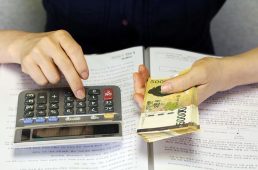The economic thinking of the nineteenth and early twentieth centuries, was based largely on the idea of the “economic man” . According to this view, the economic person is a rational, logical creature who tries to achieve maximum benefit according to the information and resources at his disposal at any given moment.”
This idea lasted over 110 years until two researchers named Daniel Kahneman and Amos Tversky showed in a series of studies that humans are really, really irrational. The results of Kahneman and Tversky’s research were published in 1974 and caused a great uproar in the field of economics in general and economic behavior in particular. All the basic assumptions used by the researchers until the publication of their study have been completely undermined. For their research in the field of irrational economic behavior they were awarded the Nobel Prize in Economics.
Studies and your intuition have shown that this phenomenon of inconsistency and irrationality in economic behavior is very common. For example, in the supermarket we are willing to spend 10 minutes comparing prices of soft drinks in order to save 1 NIS on a bottle, but on vacation in Eilat we will purchase a can of drinks for 10 ₪, even though a 5-minute walk from the hotel there is a grocery store that sells the same can at half price. It turns out that the circumstances of the payment affect the perception of the value of money. On vacations, our money is simply worth less, our wallet is pulled out without a second thought, and we part with the money more easily.
Another example, imagine that you are in a bookstore and you found a book that you want that costs 150 NIS (yes it is an expensive book but really worth it). Just before the purchase, your friend enters and tells you that within a 10-minute walk you can purchase the same book on sale and at a price of 85 ₪. I guess most of us will bother ourselves to the other store if only to avoid coming out suckers. Now imagine that you are about to buy a car for 110,000 NIS. Just before the purchase, your friend from the previous story arrives and says that he saw the same vehicle at the end of the street, a 10-minute walk away, for 109,935 ₪. I allow myself to prophesy and say that most of us will not make the effort for a small sum of NIS 65. The reason that 65 NIS in the case of the book is worth much more than 65 NIS in the case of the car has to do with the relative way in which we perceive the value of money.
In lectures I often give a simple example of the irrationality of people’s financial thinking. I point to my laptop and ask people if they would be willing to pay me NIS 500 in cash for it. I usually receive many purchase offers on the spot. Then I ask if they were willing to pay those NIS 500 on condition that the money be taken directly from their pension account. At this point, no one is ready to make the purchase anymore. Changing the attitudes of the audience indicates that we attribute different value to the same amount of money in different circumstances. Money in the pension fund is considered “equal” money that should not be touched, while money in the wallet is intended for purchases, even though the money from the wallet could easily be transferred to retirement, if only we wanted to.
On the basis of additional findings in the field, I built a table showing the relative value of money, according to the circumstances.
| The Cognitive ContextofMoney | Relative value |
| Funds in a pension plan | 1.16 |
| Cash in pocket on a note of 10 | 0.99 |
| Credit card cash | 0.96 |
| Money I received as a gift | 0.91 |
| Break | 0.88 |
| Money I earned in investments | 0.78 |
| Credits | 0.74 |
| Money in foreign currency on vacation | 0.69 |
| A little money in your pocket | 0.59 |
| Money I just found on the street | 0.54 |
A few other things that affect the perception of the value of our money:
- At night money is worth less than during the day.
- When we are drunk, the money is worth much less.
- When we dress in our best clothes, expensive and dignified clothes, the money is worth less.
- When we’re among a group of friends or people who are similar to us in background and status, money is worth less.
Of course, these principles are well known to marketers and they use them for their purposes at every opportunity. The question is how we, as professionals, can equip families with tools to help them cope with what seems to be an innate mental malfunction in all people. Although it is too short to discuss all the tools in the field, I will mention one tool nonetheless.
The real price we pay for almost everything we want is actually not money but time. To make money, we need time. It is not for nothing that the saying is used time is money. One way to understand the real price of a product is to translate it into units of time. If we take my income and divide it while I work to generate the money, we get the time key. For example, if I leave for work every morning at 8:00 a.m. and return at 6:30 p.m., that means I allocate 210 hours a month to generate my monthly income. If I make NIS 7,000 a month, that means I actually earn about NIS 34 an hour or NIS 350 a day.
The next time, when I want to go on vacation in a hotel at a cost of NIS 5,000, I will have to decide whether it is worth giving up almost a month of my life in order to pay for the vacation that lasts only a few days. From now on, say, “A movie costs me two hours, gas costs me a week, and a new armchair costs me two months of my life.” Such a calculation helps us in exercising rational economic judgment, and it greatly reduces the impact of tempting marketing offers on our decisions.



